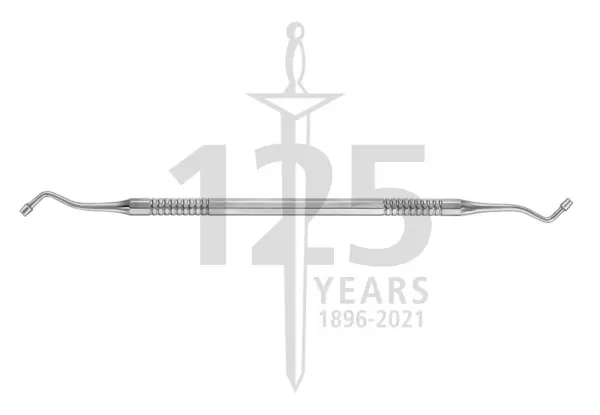
Root Canal Instruments - Dental Restorative...
Root Canal Instruments - Dental Restorative / Endodontic made by Schwert 2988 TWEEZE...
Portal and digital medical technology fair of the largest MedTech cluster in Germany

Root Canal Instruments - Dental Restorative...
Root Canal Instruments - Dental Restorative / Endodontic made by Schwert 2988 TWEEZE...

Filling Instruments - Restorative / Endodontic
Filling Instruments - Restorative / Endodontic made by Schwert 3425 CALCIUM-HYDROXID...

The root canal filling material used for endodontic treatment is called gutta-percha. This material is non-thermal and conductive. It is also easy to remove from the root canal. Its high plasticity and toughness make it an excellent choice for this procedure. It has been around for over 50 years and is still used today. It is also an excellent choice for children and adults who want a permanent filling for their tooth.
When it comes to filling the root canals, it's important that the material fit properly. Gutta-percha is a thermoplastic rubber-like material that is heated, compressed, and sealed. This is done to prevent reinfection and to improve the appearance of the tooth. Once it is filled, a dentist will then apply an adhesive cement to seal the canal. This will protect the teeth from future bacteria and infection.
Gutta-percha is a radiopaque material, which means it will not show up on X-rays. Its low density and a lack of permeability makes it easy for a dentist to spot the filling, which is crucial for successful treatment. The standard filling material for root canals is gutta-percha, which is a natural polymer that is derived from a specific type of tree.
The most common method for filling a root canal is vertical condensation with hot gutta-percha. This technique is high-quality and efficient, and is the most commonly used in the endodontic industry. The dental material is a highly-preferred choice as it has the same chemical composition as natural rubber. The heated material will ensure that all cavities are filled in the tooth's root canal securely and completely. No other method can guarantee the complete filling of the root canal system.
Hot gutta-percha is the most common method for root canal filling. The material is highly liquified when heated. When applied to a root canal, this material follows the complicated morphology of the root canal. The fluid will be poured into various parts of the lumen to create an ideal three-dimensional filling. Yang Chunxia et al. found that using hot gutta-percha in the treatment of non-vital teeth reduced the risk of tooth extrusion.
Another technique used in root canal filling is called retreatment. This involves replacing the gutta-percha material. Unlike the traditional gutta-percha, the procedure is technically challenging and time-consuming, but the benefits are worth it. It is the preferred treatment for many patients with endodontic problems. It improves the results of restorative procedures and can be performed by a dentist with the right expertise and experience.
There are several advantages to gutta-percha as a root canal filling material. It is similar to latex, but is less conductive. Therefore, it may not be suitable for certain types of restoration methods. The use of this material will result in a more permanent filling than a temporary one. It will also prevent bacteria from entering the root canals. This method is more effective than any other alternative for filling a tooth's roots.
Become a digital exhibitor yourself in the online portal of the largest and best-known MedTech cluster region in Germany and inform the world of medical technology about your products and services as well as about news, events and career opportunities.
With an attractive online profile, we will help you to present yourself professionally on our portal as well as on Google and on social media.